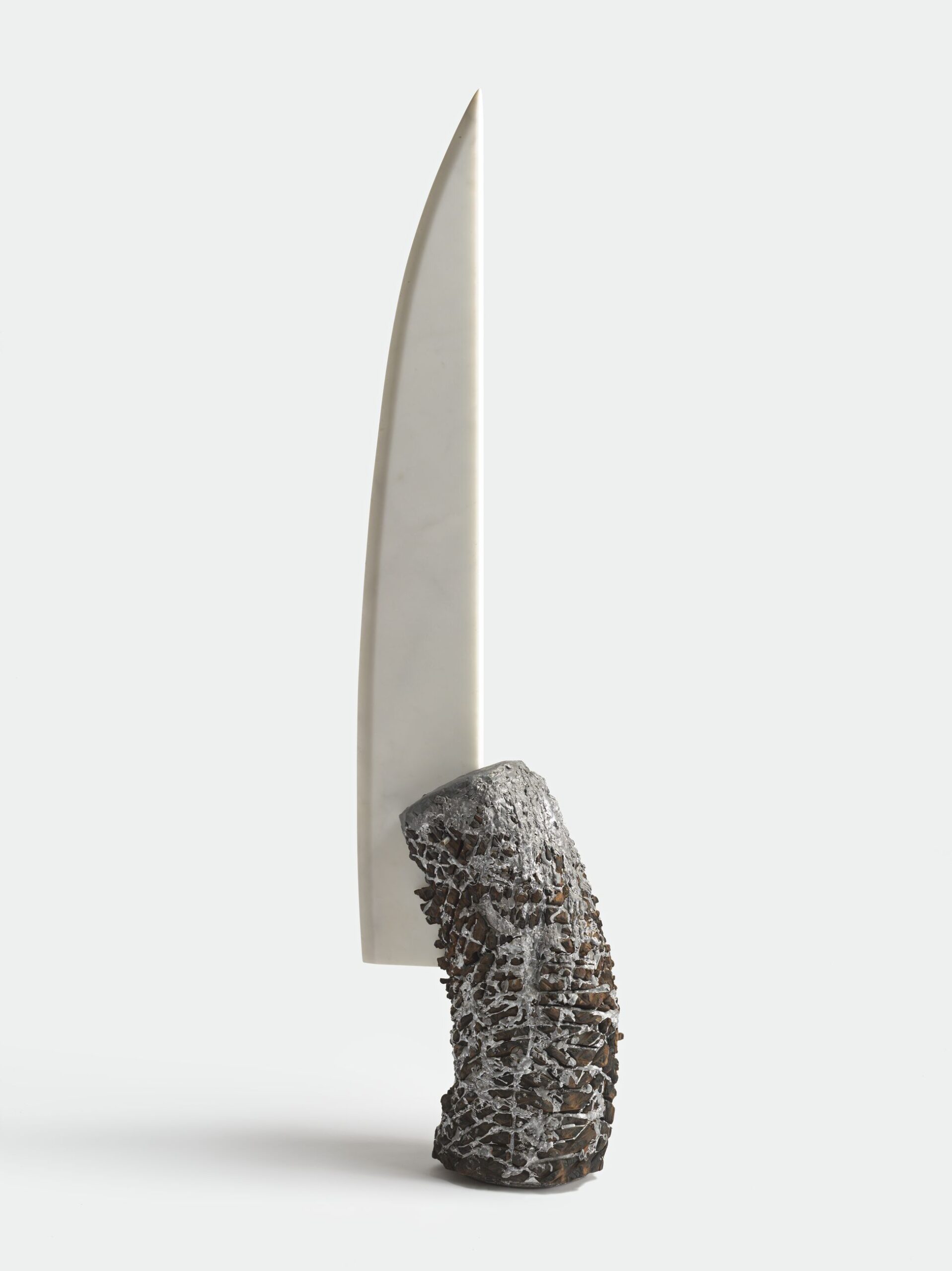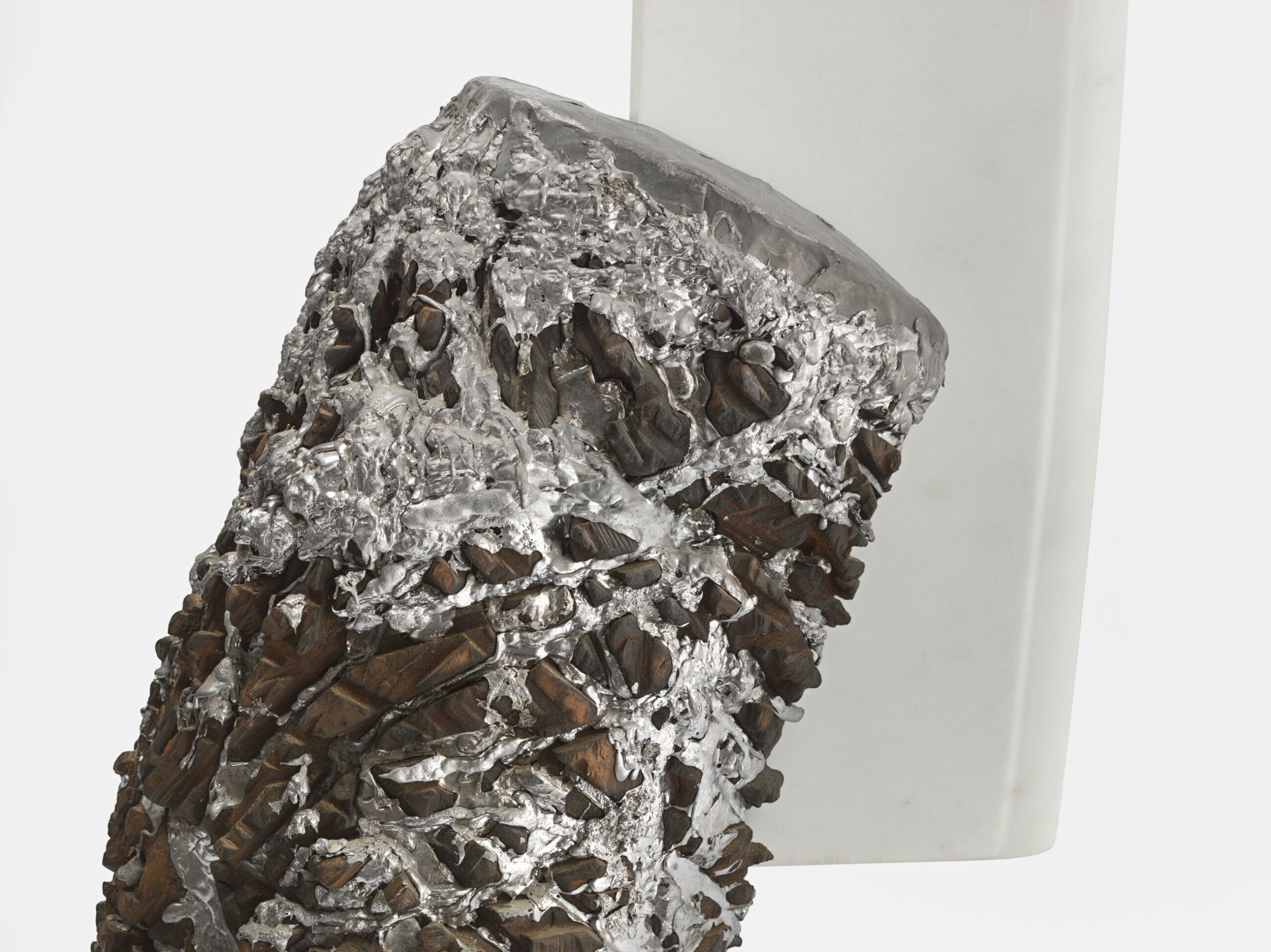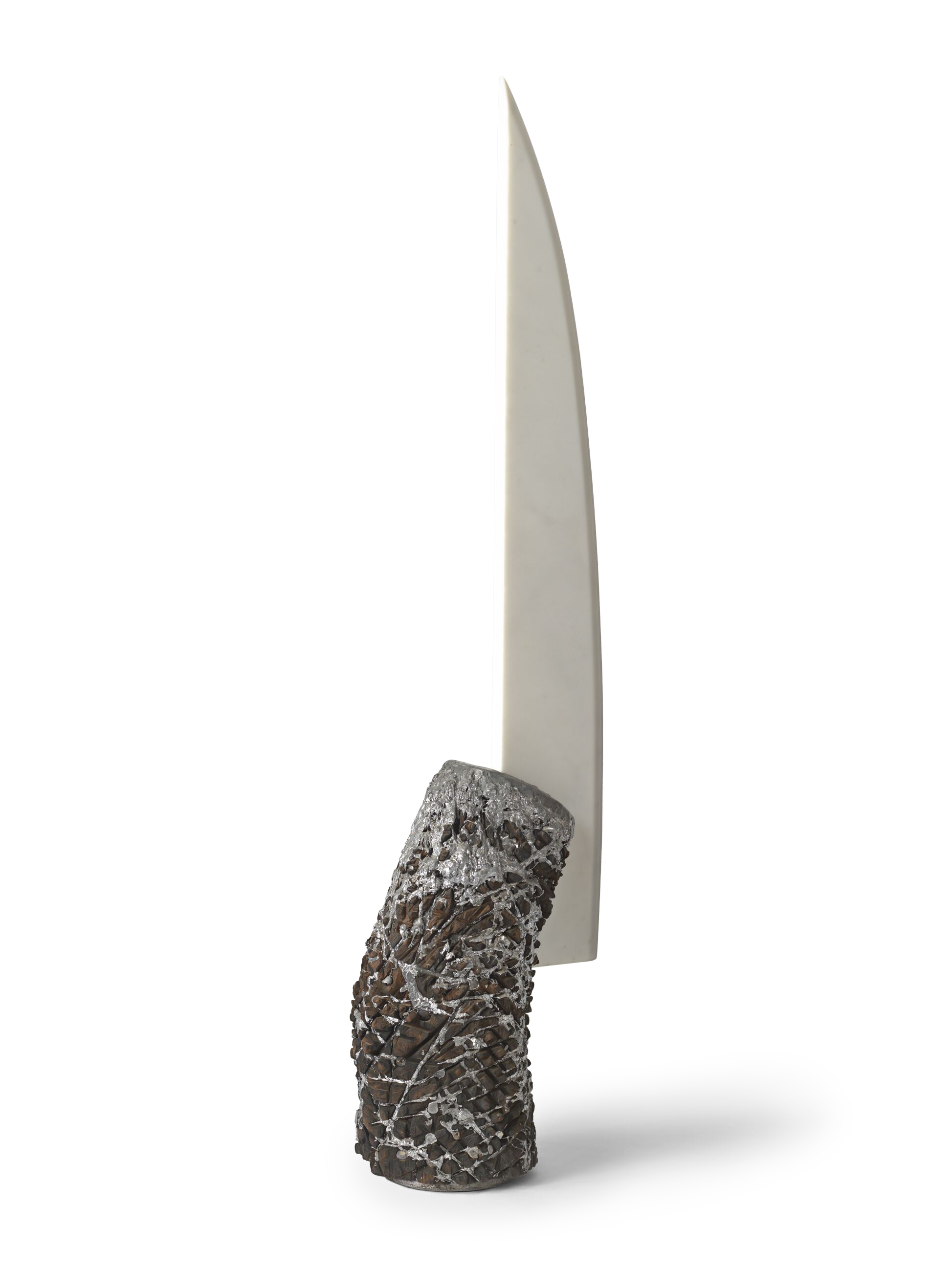Jack Whitten
The Apollonian Sword
The Apollonian Sword
Jack Whitten
The Apollonian Sword
2014
Marble, metal, lead, charred black mulberry wood
184 x 56 x 46 cm / 72 1/2 x 22 x 18 1/8 in

Over the course of fifty-five years, Jack Whitten’s sculpture practice remained a private yet integral component of his work. Whitten’s relationship with sculpture began in the late 1950s when he experienced African art first-hand at the Metropolitan Museum of Art and the Brooklyn Museum. Whitten later noted: ‘My people were brought to America as slaves…uprooted from their language, religion, and all aspects of their native culture. Intuitively, I knew that African art held a secret, something that could possibly help me as a young Black man.’ [1] By 1962, he began carving wood as an investigation into African sculpture.
‘The Apollonian Sword’ (2014) fuses forms ancient and modern, European and African, poetically enacting a full circle of Whitten’s artistic engagement that was posthumously celebrated in the first museum survey of his sculpture practice. As with ‘The Apollonian Sword’, most of Whitten’s sculpture produced after 1969 was created in the Cretan village of Agia Galini, Greece, where the artist summered with his family every year and worked out of his open studio. Whitten’s ‘The Apollonian Sword’ summons a communal aspect in its balanced accumulation of sourced materials and is one of five closely related sculptures that each incorporate a marble blade as a central element, invoking ancient knives and swords. Upright and gleaming, ‘The Apollonian Sword’ majestically embodies the strength and harmony of Apollo, the Greek god of light.

1.) Jack Whitten, ‘Why Do I Carve Wood?’, in ‘Odyssey. Jack Whitten Sculpture 1963-2017’, New York NY: Gregory R. Miller & Co. with The Baltimore Museum of Art, 2018, p 36.



